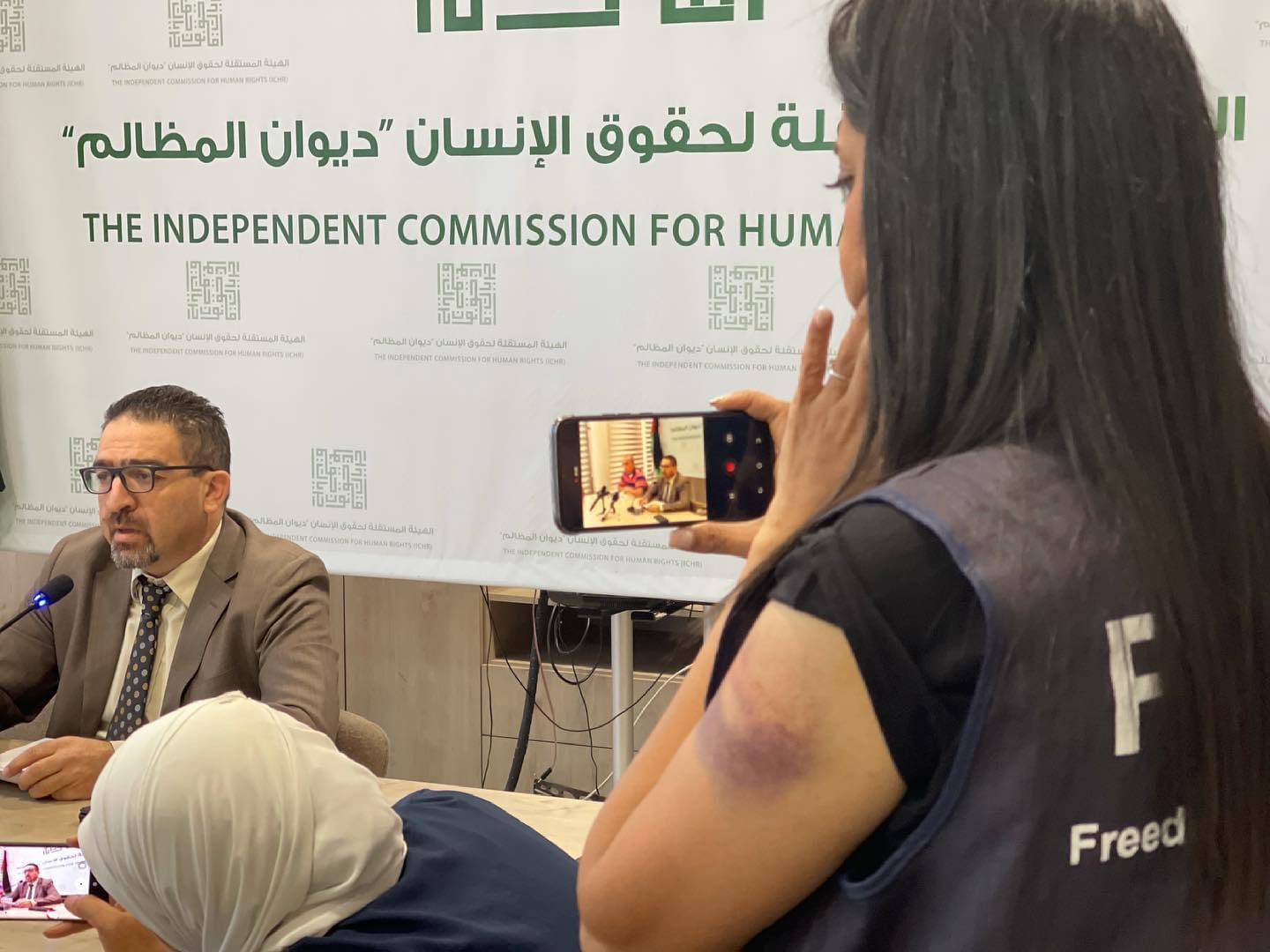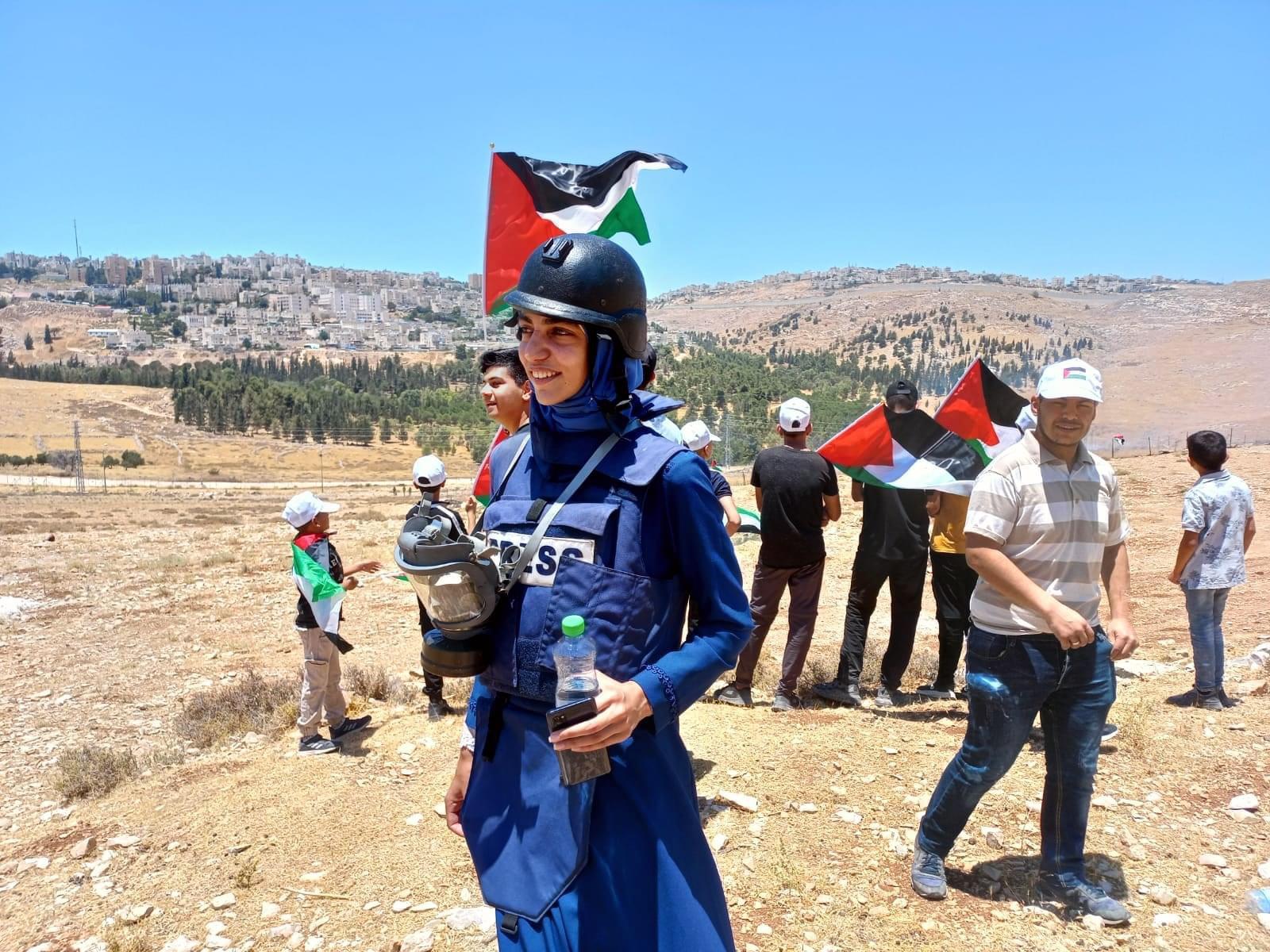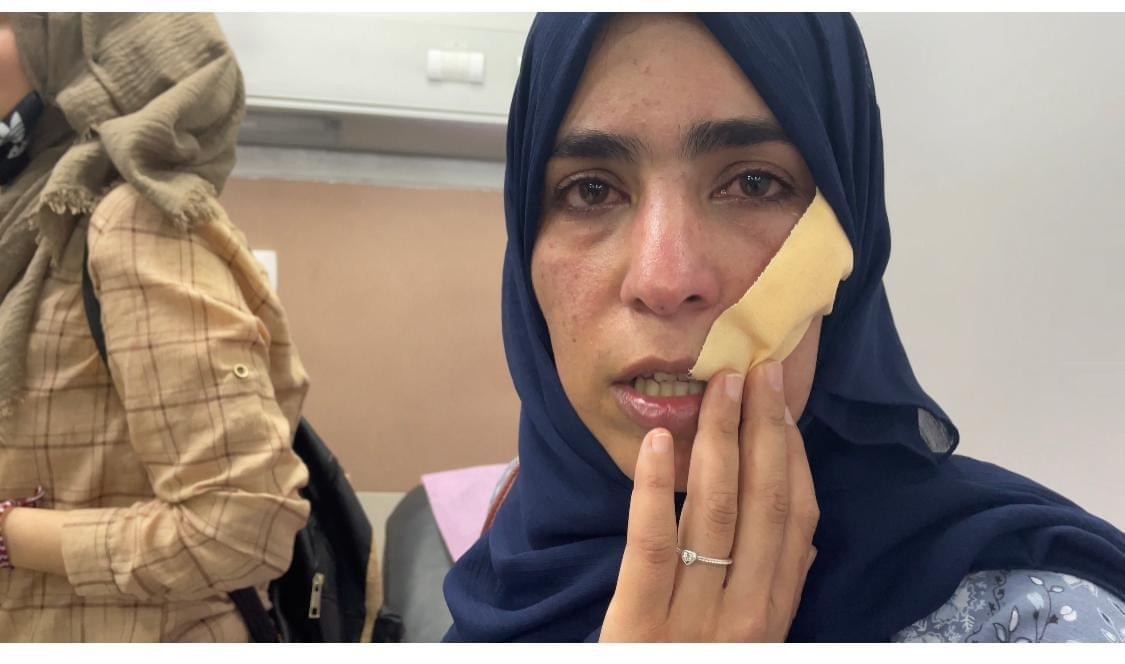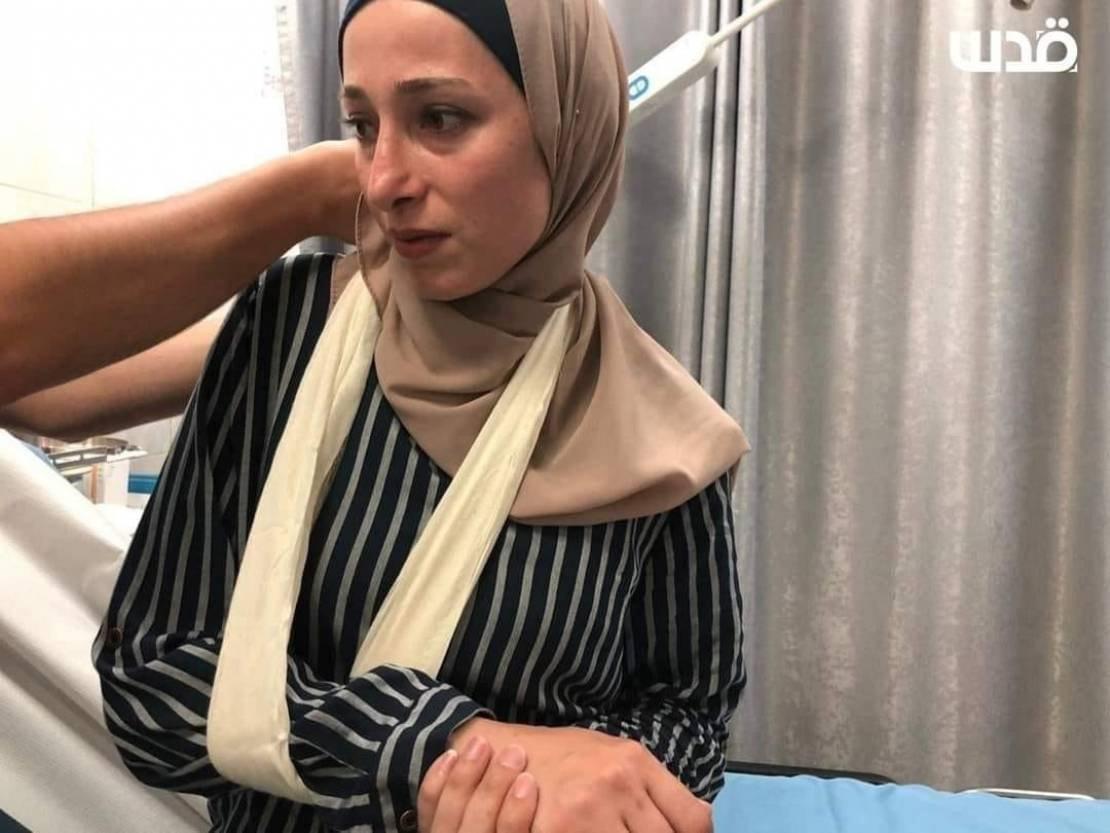Palestinian women journalists speak out against 'deliberate' attacks by PA forces
 |
For several days now, Palestinian journalist Najlaa Zaitoun has been trying to convince her children, 11-year-old Haytham and 8-year-old Zein, to leave the house.
'A person wearing plain clothes threatened me, to my face, that he would rape me, and then defame my reputation'
- Najlaa Zaitoun, journalist
“I’m afraid the person who beat you will come and beat me,” Zein said to her, as she urged them to keep up their training at the sports club they usually go to every day.
On 26 June, the 35-year-old was assaulted by plainclothes security forces while she was covering protests called following the death of popular Palestinian activist Nizar Banat while in Palestinian Security Forces custody two days earlier.
The security forces chased Zaitoun, seized her phone, which she was using to film the protest, and violently attacked her with a truncheon. She was also threatened with rape.
"A person wearing plain clothes threatened me, to my face, that he would rape me, and then defame my reputation," she tells Middle East Eye.
Zaitoun has been living in a state of fear ever since and the violent beating she received has left visible marks on her body.
"I don't feel safe, not even in my own home," she says. Since the attack, Zaitoun has been staying at her parents’ house.
Meanwhile, the assault on the journalist has moved online, with a smear campaign targeting her on social media accounts affiliated with the Palestinian Authority (PA) and accusing her of being the “one who attacked the security forces.”
Targeted attacks
The attack on Zaitoun is one of several instances of violence against women journalists in the course of their work covering the protests. The incidents indicate that Palestinian security forces are specifically targeting women journalists, as reflected in the escalating levels of hostility and violence towars them compared to their male counterparts.
Attacks on women journalists have included physical violence, as was the case with Zaitoun and four others; confiscation of electronic devices used to cover the events; intimidation and harassment; chasing journalists in the street; arrest attempts and a ban on reporting.
The assaults have continued even after the protests were over, with many female journalists receiving veiled threats that they will be discredited and defamed.
Saja al-Alamy is one of those attacked while reporting on the protests. On 24 June, Alamy was subjected to several attempts by security forces to prevent her from doing her job, and had to show her Palestinian Journalists Syndicate membership card each time.
Two days later, expecting journalist to go on being obstructed, Alamy wore her bulletproof press body armour and affixed her press card on the back of her phone, which she was using to film the events.
None of this stopped her from being attacked. Instead, she believes the measures did her more harm than good.
“My press armour helped the perpetrators to identify me as a journalist, and attack me,” she says, adding that she was only able to escape the scene after she had taken off her press vest and concealed her identity as a journalist.
“There was a direct attack on us. One of the security officers in plainclothes was pointing at my female journalist colleague and me, asking his partner to take a photo of us so that he can identify us later,” she says.
Security forces had first attacked a group of journalists, including Alamy, with tear gas, but upon noticing her filming an attack on protesters, she was directly targeted. Alamy resisted the officers’ violent attempt to confiscate her phone, and refused to hand it over. She then managed to flee the scene to a nearby building and hide in a women’s toilet.
Alamy tried for more than an hour to reach her colleagues for help, but all entrances were being watched by security officers, including those who had chased her. She was eventually able to escape, after shedding her press armour, and pretended to be out shopping.
Life threatening
MEE reporter Shatha Hammad was also among the women journalists who were targeted in the attacks of 26 June.
She sustained a shrapnel wound to her face from a tear gas canister that a security officer shot directly at her after failing to confiscate her phone.
Hammad says that security officers in plainclothes had focused their attention on women reporters, singling them out by pointing at them, even before the clashes erupted, which, she believes, suggests that the assault was planned and deliberate.
According to Hammad, the unprecedented violence against women journalists made her feel insecure and trapped.
“What happened is life threatening,” she says, demanding immediate action from local and international organisations to provide the necessary protection for them.
The detailed testimonies of women journalists were shocking to many, especially the Palestinian Authority’s use of cultural norms to shame and intimidate women, exercising social pressure against them as an attempt to silence and prevent them from performing their work.
According to Ghazi Bani Odeh, head of the monitoring and documentation unit at the Palestinian Centre for Development and Media Freedoms (Mada), these exponential attacks against women journalists are unprecedented and planned.
“The assaults on female journalists have two levels. The first is the direct physical violence in the streets; then comes the online attacks designed to incite people to exert social pressure on them,” Bani Odeh tells MEE, in reference to the smear campaigns that use hate speech that could fuel violence against them.
Smear campaigns
One of the journalists targeted by a defamation campaign was Fayhaa Khanfar, who was beaten up in the street on 26 June, with her phone stolen from her as she covered the protest.
'When I regained consciousness, I went to security officers crying and asking for help. But no one moved a muscle'
- Fayhaa Khanfar, journalist
Security officers in plain clothes had chased Khanfar to confiscate her device and knocked her to the ground, causing her to briefly lose consciousness.
No one had intervened to help her. The attack resulted in a hairline fracture to her shoulder and bruises all over her body.
“I was attacked by security officers wearing plain clothes. They pushed me to the ground and stole my phone,” Khanfar tells MEE.
“When I regained consciousness, I went to security officers crying and asking for help. But no one moved a muscle.”
Orchestrated online attacks targeted Khanfar, who wears the hijab, aimed to discredit her in a conservative society by circulating images of a girl in beachwear, who looks very similar to Khanfar, and falsely identifying her as the journalist.
Khanfar was later summoned for interrogation at the intelligence headquarters in Ramallah, in the occupied West Bank, and told that she had to appear if she wanted to collect her phone, a move she considered an attempt to lure her in and arrest her.
Wafa Abdulrahman, the director of Filistiniat, a civil society organisation, sees the attacks on journalists as a chilling attempt to silence the women who have been spearheading the protests.
Abdulrahman says that the systematic targeting of women journalists is intended to first send them a threatening message, and second, to warn the society that women reporters will not be spared and that the power of the security forces is unbreakable.
As attacks on women journalists continue through online defamation campaigns and veiled threats, they find themselves living in constant danger and feeling personally insecure.
According to Majid Arori, a media freedom activist and a human rights specialist, there has to be individual and collective legal actions to deter such attacks in the future.
“The attacked women journalists must file legal complaints, providing the necessary documentation via local and international legal organisations to exert pressure on those who perpetrated the assaults,” he says, adding that these attacks are attempts to suppress critical voices and any protests against corruption.






No comments:
Post a Comment
Note: only a member of this blog may post a comment.